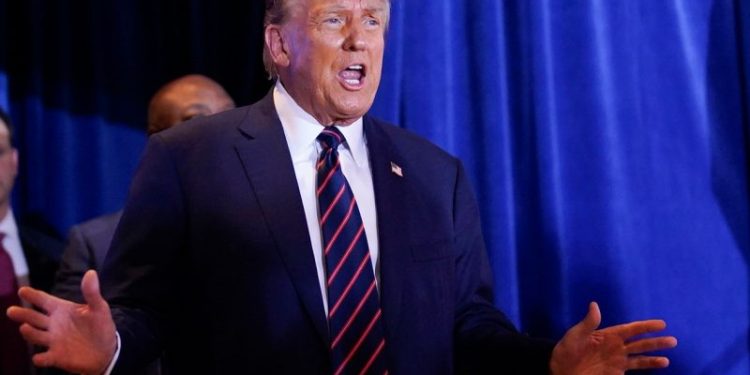Given how Donald Trump has solidified Republican support over the past eight years, it’s easy to forget how rocky the path was to his first nomination.
Trump lost Iowa in 2016 before winning New Hampshire. In neither race did he get a majority; in fact, in New Hampshire, he barely got more than a third of the vote. He had more opponents, yes, but he still didn’t beat 50 percent in any state until mid-April 2016. That was in his then-home state, New York.
For a while, there was speculation that Trump would fail to get the delegates he needed before the convention, meaning a potential fight on the convention floor. (This is why he originally brought in his now-disgraced aide Paul Manafort, to manage the delegate fight.) That didn’t happen, mostly because Republican voters coalesced around his candidacy.
This year is different. Trump got a majority of the vote in Iowa and New Hampshire. In the former, there were several other major candidates still in the race — more than when he won New York in 2016, in fact. In the latter, he only faced one major candidate, but that race should carry an asterisk when using it as a measure of Republican support.
To summarize all of this succinctly: Trump’s Iowa and New Hampshire finishes are not a robust indicator of weakness.
I wrote about Iowa last week, when observers kept pointing to his low vote total to suggest that it was a warning sign for November. That doesn’t seem to be accurate, for the reasons I explained then. So let’s look instead at New Hampshire.
Suffolk University, polling for USA Today and the Boston Globe, repeatedly polled the New Hampshire race over the course of the month. During that time, three major candidates dropped out: former New Jersey governor Chris Christie, biotech entrepreneur Vivek Ramaswamy and, two days before the primary, Florida Gov. Ron DeSantis. As a result, Trump and former U.N. ambassador Nikki Haley (his only remaining competitive opponent) gained support.
According to Suffolk’s polls, Trump gained it faster after the Jan. 15 Iowa caucuses, presumably because Ramaswamy and DeSantis’s bases of support preferred Trump to Haley.
The actual results, though, were narrower than that last Suffolk poll. (They were closer to the final 538 polling average.) This suggests that Suffolk’s estimates of who would turn out might have been off, with the pollster assuming a more Trump-friendly electorate.
What might have been missed? Perhaps the large number of non-Republicans who participated on Tuesday.
According to exit polling from Edison Research, only about half of those who voted in the Republican primary on Tuesday identified as Republicans. The rest were self-identified independents or Democrats. Those non-Republicans made up a much larger chunk of the turnout that was seen in Iowa; there, entrance polls estimated that 8 in 10 voters were self-identified Republicans.
The breakdown of voter identification and support measured by Edison Research looks like this. The size of each pie chart is scaled to the percent of all voters in the contest.
Two things might jump out here. The first is that Haley’s percentage among those self-identified independents in New Hampshire was way higher than in Iowa — and, again, that chunk of voters was far larger than in the previous week’s caucuses. The second is that Trump’s support among Republicans in New Hampshire was about equal to his support plus DeSantis’s in Iowa.
That’s not a clean bit of arithmetic, certainly. Trump’s New Hampshire support might have been expected to be close to how he, DeSantis and Ramaswamy did in Iowa, but it was well short of that. Nonetheless, in Iowa and New Hampshire, at least three-quarters of his support came from Republicans. While a similar percentage of Haley’s Iowa support came from Republicans, 7 in 10 of her New Hampshire votes came from people who said they weren’t Republicans.
The 538 national polling average now indicates that Trump is the preferred candidate of 7 in 10 Republican primary voters. This is well above where he was at any point in 2016; that year, he never reached 50 percent in national polling averages. It also is roughly where he landed among Republicans in New Hampshire.
No candidate is a perfect fit for every voter — even Trump. Republicans may have liked Trump and DeSantis but preferred the Florida governor’s policies. But his departure meant that Trump was likely to benefit. That’s how the primary process works and that was a reason that Trump’s support in Iowa was just above 50 percent.
The primary is also about the Republican Party picking its presidential nominee. While the narrowed field in New Hampshire was closer than polling predicted (and certainly closer than Trump wanted), it doesn’t reflect particularly soft Republican support for Trump.
Trump was polling at 47 percent in RealClearPolitics’s last polling average in May 2016. Just over eight months later, he was president.





